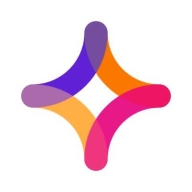

IBM InfoSphere Information Server and Jitterbit Harmony are competing products in the data integration sphere. Jitterbit Harmony has the edge due to its superior features and value for pricing.
Features: IBM InfoSphere Information Server focuses on scalable, enterprise-grade integrations, strong metadata management, and robust data governance. Jitterbit Harmony provides pre-built connectors, real-time integrations, and an intuitive design environment.
Room for Improvement: IBM InfoSphere could enhance its cloud capabilities, simplify its user interface, and reduce complexity in deployment. Jitterbit Harmony could benefit from expanding its library of connectors, improving deep integration capabilities, and enhancing support for large-scale enterprise environments.
Ease of Deployment and Customer Service: Jitterbit Harmony's cloud-based deployment ensures faster setup times with minimal infrastructure needs and offers responsive support. IBM InfoSphere involves a complex, on-premise implementation and provides comprehensive but slower support.
Pricing and ROI: IBM InfoSphere offers competitive pricing for enterprises, though initial costs are high due to infrastructure demands. Jitterbit Harmony’s flexible subscription model presents a lower initial investment and offers faster ROI through cloud-based services.
| Product | Market Share (%) |
|---|---|
| IBM InfoSphere Information Server | 0.9% |
| Jitterbit Harmony | 0.6% |
| Other | 98.5% |


| Company Size | Count |
|---|---|
| Small Business | 3 |
| Midsize Enterprise | 1 |
| Large Enterprise | 3 |
| Company Size | Count |
|---|---|
| Small Business | 8 |
| Midsize Enterprise | 3 |
| Large Enterprise | 1 |
Jitterbit Harmony offers an advanced integration platform that simplifies data transformation, helps users quickly connect apps, and automates workflows, streamlining complex business processes efficiently.
Designed to meet the high demands of modern businesses, Jitterbit Harmony enables seamless integration across cloud and on-premise environments. By leveraging its powerful tools and user-friendly design, users can accelerate innovation, reduce operational costs, and enhance productivity. It bridges the gap between traditional and emerging technologies, ensuring organizations can adapt quickly to market changes and remain competitive.
What are the key features of Jitterbit Harmony?Jitterbit Harmony finds its application across numerous industries, from enhancing data integration in the healthcare sector to optimizing supply chain logistics in manufacturing. It supports financial institutions by improving transaction processing and facilitates real-time data connectivity in retail environments, making it a versatile choice for diverse industries looking to innovate rapidly.
We monitor all Data Integration reviews to prevent fraudulent reviews and keep review quality high. We do not post reviews by company employees or direct competitors. We validate each review for authenticity via cross-reference with LinkedIn, and personal follow-up with the reviewer when necessary.